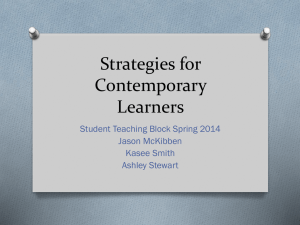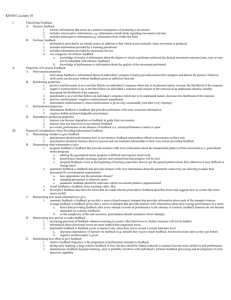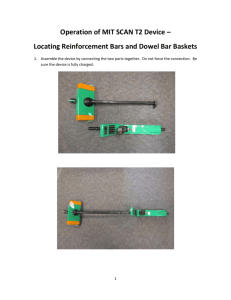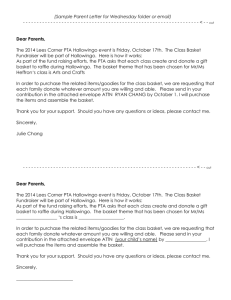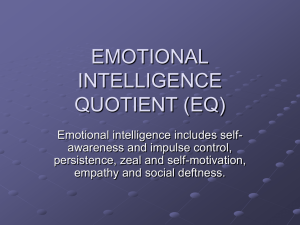Bridging the Gap: Vocabulary Instruction to Acquisition
advertisement
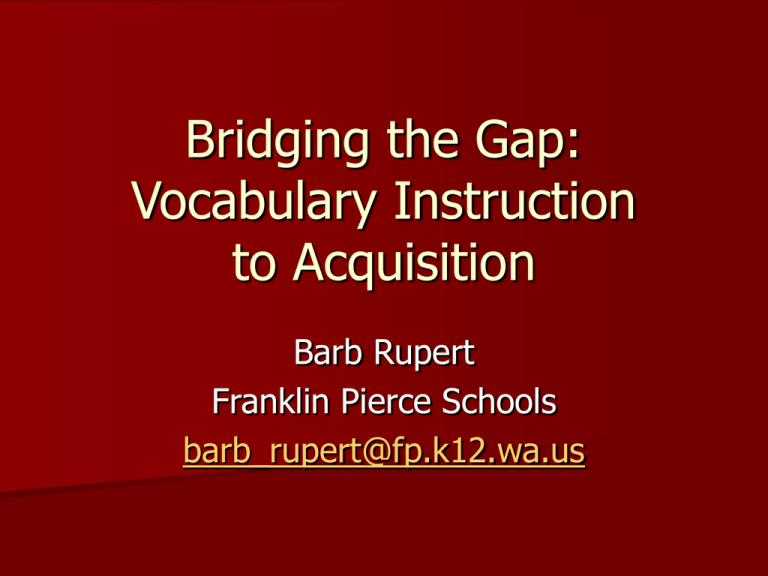
Bridging the Gap: Vocabulary Instruction to Acquisition Barb Rupert Franklin Pierce Schools barb_rupert@fp.k12.wa.us Hey that’s me! I love my job! I used to love my job, but now I’m really tired. I work primarily at the elementary level. I work primarily in post-secondary. I work with middle school or Jr. High aged kids. I work with high school students. I mostly work with adults. I deserve a raise! I’ve read a great book recently. Hey that’s me! I have children at home. I have an “empty nest.” My children at school are enough! I love to travel. I am invigorated by teaching. I am constantly challenged by my job. I think I found my calling. I need a vacation! Teaching is more challenging than ever Changes in classroom dynamics Challenge to meet the needs of diverse learners Accountability for learning for all Focus on learning (acquisition) vs. teaching Why vocabulary? Single most important tool for communication Empowers the language student Helps to develop cerebral flexibility Goal is automaticity for greater ease in communication Learning wires the brain Bridging the gap between instruction and acquisition Vocabulary presentation Practice Assessment Vocabulary presentation ‘Chunk’ the information (7-12 words at a time) Present in multiple learning modes Involve questions: The brain is more receptive to questions about new knowledge than it is to answers (Jensen) Create Context – Associate directly with meaning – Avoid translation – Use visuals and examples Create contexts (families, airplane, paper dolls, props) Scavenger Hunt Labeling Activities Scavenger Hunt First time they get the written words for parts around the school Be clear about expectations. Work in teams with a deadline (it’s a ‘race’). Give the labels to people ahead to put up in the morning (Email reminders are good!) Each team has a differently ordered list and a blank map to label. Examples of clues: – – – – – – The secretaries answer the phone here. This is where sick students rest. Students eat lunch here. We play football here. The librarian helps the students in this place. Students do science experiments in this room. Connect to prior learning Knowledge Rating List-Group-Label Think Pair Share K-W-L Knowledge Rating Scale -Blachowicz Create a KRS with 8-10 key words from section of text. Give students a copy. Read each word aloud and have students indicate their knowledge level. Divide into mixed ability pairs or groups to share. Teach them to use the text for context or as a resource. Call on students to complete the chart with the class with definitions or pictures. Make it relevant Be clear about the purpose Make it personal – T charts of likes/dislikes (food, weather, travel) – Top 10 (Have them rank chores, activities, classes, small groups discuss) Hook into emotional pathway ‘Begin with the end in mind’ Practice Factors for Learning Frequency -Arendal & Mann – Frequency for competent learners 4-14 repetitions to learn – Frequency for challenged learners 250-350 repetitions Intensity – Practice makes perfect Cross training – Connect to other skills and content areas Activities to increase frequency Hot or cold Fruit basket upset Body ball Counting (pronoun bubbles) Flashcards Fruit basket upset Chairs or desks in a circle, one fewer than the number of participants Each player has a picture or object representing vocabulary words Must have at least three participants with the same picture The person in the middle calls out an object, those participants change chairs The person left calls out another item or items Trade items after a few rounds to practice new words El cubierto Fruit basket upset el plato el cuchillo la cuchara el tenedor la servilleta Body Ball Trace or project a human sized body Two teams compete Name the body part to be hit – Two points for direct hit – One point for hitting body, but not part – Negative point for repeating Use nerf or skwoosh ball to avoid annoying colleagues Novelty and Variety Students are volunteers Learning must be engaging Use All-respond strategies – By definition, if you are calling on a child one at a time, they are not engaged Provide novelty and variety – Fortune tellers – Hillarium Hillarium Create decks of cards with matched pairs of the written vocabulary words in target language. Shuffle the cards and deal them all out to students (4-8 in a group) Students begin acting out vocabulary words using gestures and sound effects but no words Students who think they have a match, hold up their cards to check Object is to find matches for all of your cards Vocab words in target language Hats House Mouse Happy Eat pizza Shoes Gift Invitations Midnight Tired Argue Hug Sing Play guitar Win games Drink soft drinks Friends laughing Traditional music Barking dog Dance the macarena Eat cake Blow out candles Strategies for Practicing Wait time – “Slowing down may be a way of speeding up.” –Mary Budd Rowe Focus time Think time Exit slips Journals Visuals – Pictogramas – Illustrations Four corner reflection Choice Recoding activities: Students take information and make it their own Grouping – Categorizing vocabulary (grouping clothing by season, activities by who does them, etc.) Personalizing vocabulary Connecting (to a paperclip or a tree) Creating an image – El cuerpo de arte moderno Creating symbols, songs or movements Writing sentences, stories, etc. Remember to reinforce! Give feedback to the students to help prevent misinformation from being stored in the long term memory When possible, use modeling vs. correction Use the information from formative assessments to inform instructional practice Strategies for reinforcement Provide positive reinforcement; it has the most profound effect on brain chemistry Keep reinforcement focused Consider learning styles Monitor and graph results More practice activities Put it to rhythm or song Other graphic organizers Homework and practice Mnemonics – Acronyms – Acrostics Strategies for Review Match review to instruction and assessment Review systematically over time, not just before the test Pop quizzes are good for students Review can be fun – Jeopardy Retrieve Our brains will logically access memories that are useful, that have been repeated, and that require the least effort. – S. Pinker Retrieval is the ability to access stored memories and use them to solve problems. Assessment You can only recall information that has been stored. Cramming doesn’t pay. Eustress vs. test anxiety Match instruction, practice and assessment for maximum performance Provide balanced assessments If they don’t know it, reteach the critical content Brain Based Learning “The brain is not designed for continuous learning. In fact, learning is more likely to become permanent when we pause, reflect and process what we encountered.” Amazing Brain Facts Eric Jensen
